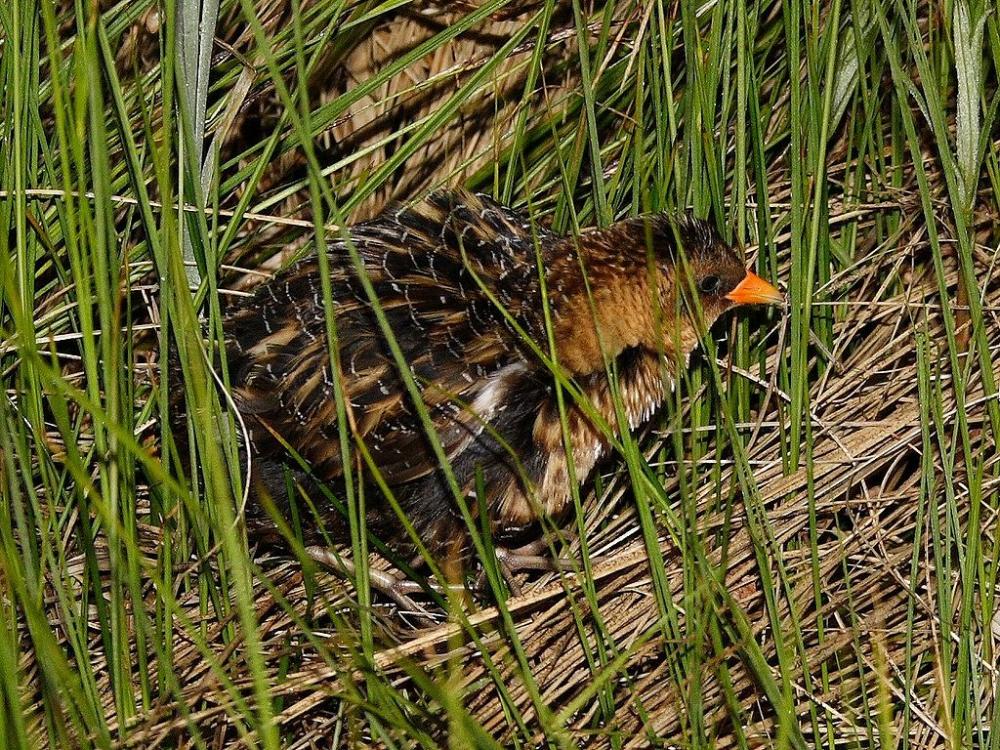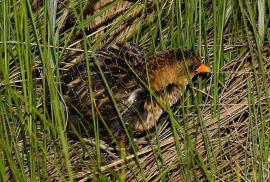Guide to Boreal Birds
Overview
Most rails live in dense marsh vegetation and are difficult to observe or even flush, but this tiny rail is especially secretive. It is seldom seen even by active and experienced bird-watchers. It can conceal itself in very short grass and can seldom be induced to fly. The best way to see one is to follow a mowing machine in a damp meadow in the Deep South during September or October. When the uncut grass is reduced to a small patch, one or more birds may flush into view, fly weakly away, and disappear into the nearest patch of tall grass. Little is known about its behavior, but it is known that incubation is done by the female alone, and that the female continues to add material to the nest until the eggs are hatched. The young--clad in black down like young of other rails--leave the nest and follow the female about in search of food.
Description
6-8" (15-20 cm). A sparrow-sized rail. Brownish buff, with a short yellow bill and yellow feet. White wing patch shows in flight.
Voice
2 or 3 clicks, sounding like pebbles being tapped together, repeated over and over in a long series. Usually heard at night.
Nesting
7-10 buff eggs, with a ring of dark spots around larger end, in a firm cup of grass well concealed in a grassy marsh.
Habitat
Grassy marshes and wet meadows.
Range/Migration
Breeds from northern Alberta east to Quebec and New Brunswick, and south to North Dakota, northern Michigan, and Maine. Winters from Carolinas south to Florida and along Gulf Coast; rarely in southern California.



